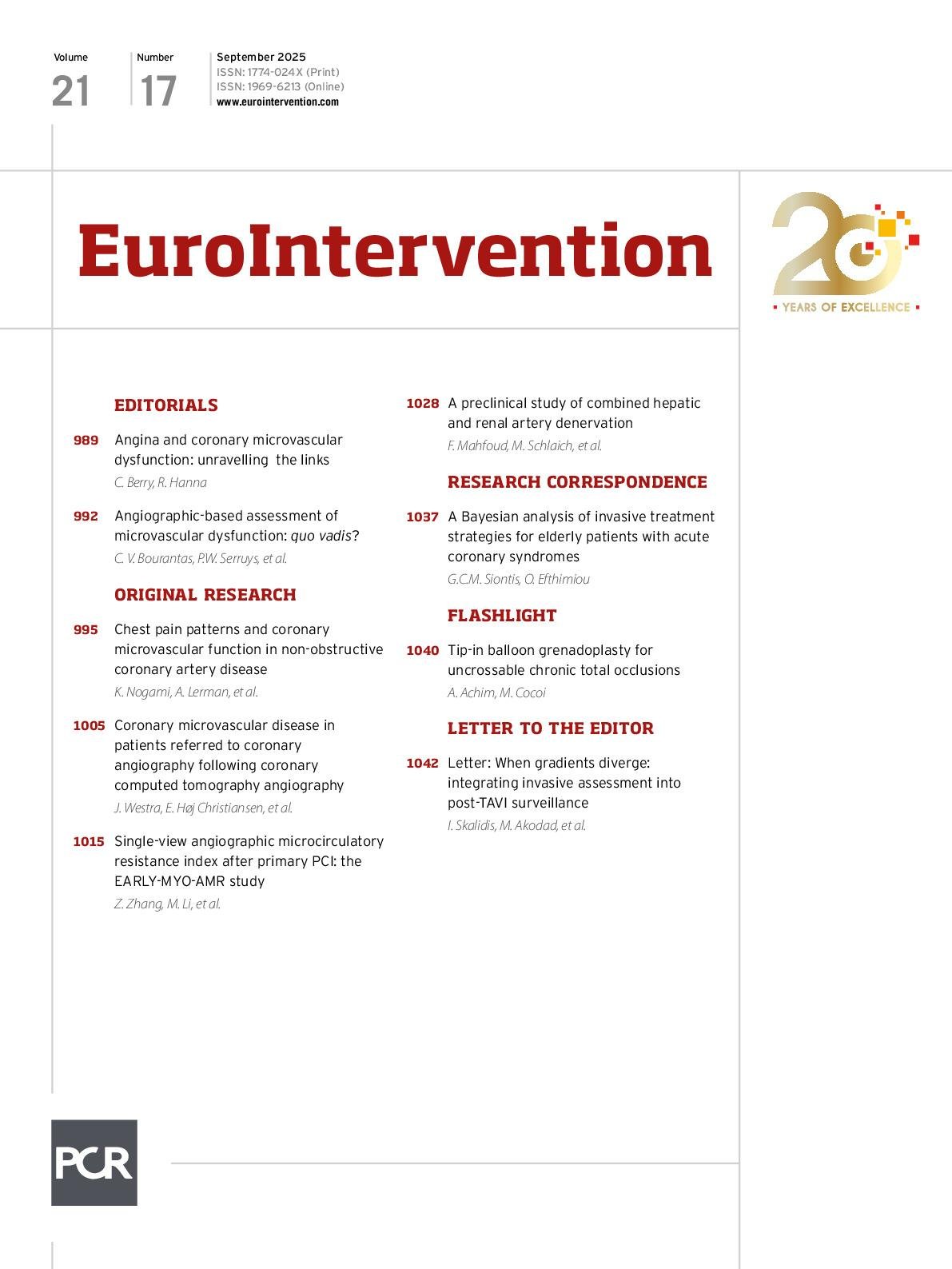From chest pain, microvascular dysfunction, acute coronary syndromes in the elderly, and, not to forget, a look at some of the latest research in renal denervation – this issue leaves almost no heart-related issue untouched!
Chest pain and coronary microvascular dysfunction
In this retrospective study of angina and non-obstructive coronary artery patients who underwent coronary reactivity testing, Kai Nogami, Amir Lerman and colleagues investigated the relationship between chest pain phenotypes and coronary microvascular dysfunction (CMD) and found that patients with exertional chest pain demonstrated worse microvascular function than those with resting chest pain.
Colin Berry and Rebecca Hanna contribute an editorial on this article.
Coronary microvascular dysfunction from the Danish Study of Non-Invasive Diagnostic Testing in Coronary Artery Disease (Dan-NICAD)
In a symptomatic coronary artery disease population, Jelmer Westra, Evald Høj Christiansen and colleagues pair bolus thermodilution and rubidium-82 positron emission tomography to assess the prevalence of CMD and then classify and compare the clinical and procedural characteristics. Nearly one in two patients were found to have coronary artery disease after assessment with routine bolus thermodilution, despite normal perfusion as assessed by rubidium-82 positron emission tomography.
Angiographic microcirculatory resistance after primary PCI
Zhiwen Zhang, Muwei Li and colleagues evaluate the use of angiographic microcirculatory resistance for detecting CMD and predicting long-term prognosis in ST-segment elevation myocardial infarction patients undergoing primary percutaneous coronary intervention (PCI). The authors found this novel, non-invasive microcirculatory resistance measurement tool useful not only in detecting CMD but in risk stratification and treatment guidance as well. This article is accompanied by an editorial by Christos V. Bourantas, Patrick W. Serruys and colleagues.
Combined hepatic and renal artery denervation
In a preclinical study on a porcine population, Felix Mahfoud, Markus Schlaich and colleagues examine the effect of combined denervation of the renal and hepatic arteries on blood pressure response and other cardiometabolic disorders. The multiorgan ablations were performed through the same access point in a single procedure and demonstrated reduced tissue norepinephrine levels at the 28-day endpoint.
Acute coronary syndromes in the elderly
George C.M. Siontis and Orestis Efthimiou demonstrate how a Bayesian analysis can be used to help understand the risks and benefits of a procedure in a certain patient population. Using data from the SENIOR-RITA randomised controlled trial, they evaluate the impact of PCI in elderly patients with acute coronary syndromes and examine how their results can be factored into decision-making.

